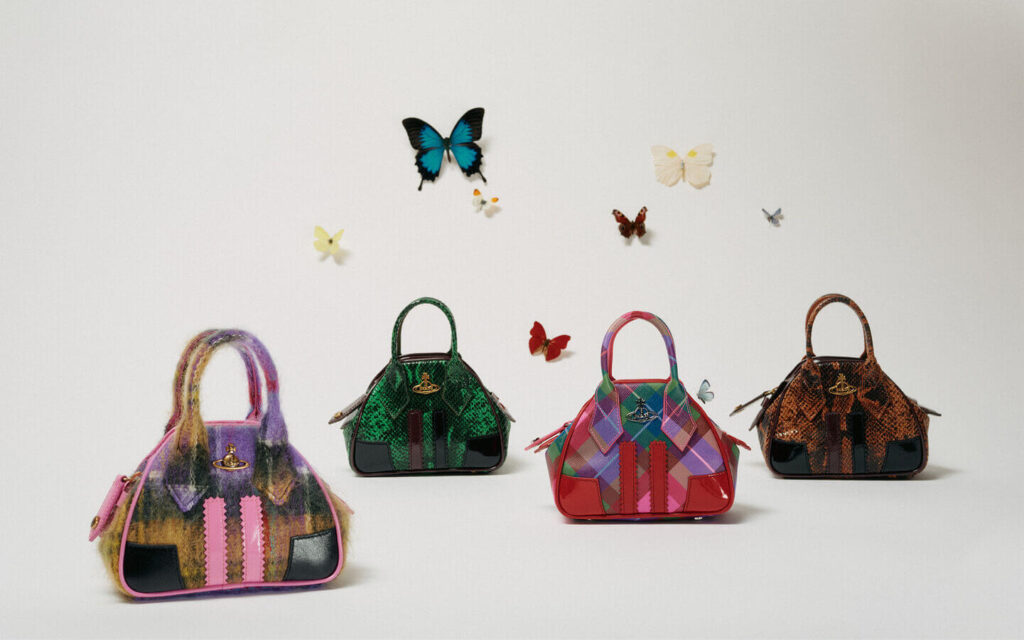This article first appeared in The State of Fashion 2022, an in-depth report on the global fashion industry, co-published by BoF and McKinsey & Company. To learn more and download a copy of the report, click here.
Consumers cut spending on discretionary items amid Covid-19 stay-at-home restrictions, and sales of beauty products plunged. In 2020, global sales fell 15 percent from $538 billion in 2019 to $458 billion. In 2021, as lockdowns ease, the sector is close to reversing that fall. A 13 percent increase in sales to $518 billion is projected for 2021 and, in 2022, sales should top 2019 levels.
Asia Pacific and North America should be the first regions to completely recover 2019 sales performance, followed by Europe, while Latin America, the Middle East and Africa will take longer. China, where the beauty market continued to grow during the pandemic, will pick up speed, fuelled by skin care and colour cosmetics.
In terms of product categories, sales of fragrance and colour cosmetics predictably fell abruptly in 2020. Although both categories are growing again, we expect consumers to continue to indulge in the “self-care” categories of skin care and hair care, which remained in demand during the pandemic. These categories do not rely on in-store trialling and lend themselves well to online discovery and purchase. Skin care will see the strongest performance, growing 22 percent in 2021 and a further 10 percent in 2022. By 2024, we estimate skin care will account for 34 percent of the global beauty market.
:quality(70)/cloudfront-eu-central-1.images.arcpublishing.com/businessoffashion/CM7HICITYFC5VE5GYP7FHCAEW4.png)
One overarching category that both brands and retailers are betting big on is “clean beauty.” The category has grown fast as independent brands claiming to use safe, natural and cruelty-free formulas flourished. Traditional players have started expanding their ranges to meet the demand, with some even reformulating hero products. When Dior launched Capture Totale C.E.L.L. Energy as an update to its established anti-ageing product line, it claimed both eco-friendly packaging and to be made from 85 percent natural ingredients. Retailers have also visibly invested in clean beauty in their choice of brands, products and store layouts. Sephora’s flagship Champs Élysées store in Paris, for example, has a large space dedicated to the category. However, some leading skin care influencers, such as Dieux Skin founder Charlotte Palermino, have expressed scepticism around the clean beauty trend, claiming specifically that non-natural ingredients are not intrinsically harmful. Both her social media posts and her own line of “non-clean” beauty products have proved highly successful.
The pandemic had a varied impact across value segments. The premium segment was hit more in the short-term as its traditional physical channels were closed. The mass segment, however, was not only more readily available online but it also skews more towards the hair and personal care products that better withstood the crisis. Premium products, including those from luxury fashion houses, are nevertheless expected to gain market share in the long run, exceeding their 2019 share by 2023, and growing at 13 percent per annum between 2021 and 2024.
:quality(70)/cloudfront-eu-central-1.images.arcpublishing.com/businessoffashion/X4EYOXVJUFEG5CYLLYLWBOXO7Y.png)
In terms of channels, digital continues to grow fast and is taking share from bricks-and-mortar retail. Online sales will account for 23 percent of the beauty market by 2022 and will become the most important channel by 2024. In China, where digital channels are more embedded in the consumer consciousness and integrated into heavily used social apps, we expect more than half of all sales to take place online by 2023. Globally, digital sales constitute a diverse group of channels encompassing social selling on platforms such as Instagram, TikTok, WeChat, Xiaohongshu and others; marketplaces such as Amazon and Lookfantastic; and traditional retail and brand e-commerce sites. Company announcements show the extent to which the beauty industry anticipates a digital future: L’Oréal, for example, has said very publicly that it is aiming for half of its sales to be generated via digital channels.
Physical stores have seen a bounce-back as lockdown restrictions lifted, and some beauty brands have even reinforced their physical presence. In the US, for example, Sephora has opened dedicated spaces in some Kohl’s department stores, while Ulta Beauty now sells a curated product range at Target. The nature of beauty products — especially colour cosmetics — means that, while customers will browse online, in-person testing is still hard to beat. As Margaret Mitchell, chief merchandising officer at UK beauty chain Space NK, explains, a customer “may want to try something from a VR perspective on a website,
but… that’s not replacing coming into a store for a complexion match.”
The desire to see and try a product, and the enjoyment of trialling and shopping for beauty products in person, should help to boost physical sales. However, in the long run, all non-digital channels, except travel retail, are expected to maintain market share at best, while most will lose.
One digital channel attracting a lot of attention and investment is social commerce, whereby brands and retailers use social media platforms throughout the sales and marketing funnel to drive discovery, conversion and purchase. Social commerce has been a popular sales channel in China for some years, already accounting for more than 13 percent of total e-commerce sales. Meanwhile, in the West, many customers are comfortable with social media for discovery, but sales are yet to take off due to a lack of platform functionality and some hesitance among shoppers. However, times are changing: both customer attitudes and technology are evolving quickly, and brands are starting to capture this opportunity.
The beauty sector is particularly well-placed to maximise the potential of social commerce. It is a highly engaging category: consumers are already familiar with online beauty tutorials, and the majority of Gen-Z and Millennials in the US prefer to discover beauty products through social media ahead of any other channel. Beauty companies must prioritise these new channels and ensure they have the right capabilities in place to ride the next wave of growth by converting social users into social shoppers.
The popularity of social commerce in China is enabled by seamless payment methods within apps such as WeChat. Brands that get social commerce right in this market have seen astonishing growth rates. Revenues at Chinese beauty company Yatsen Holdings Limited multiplied by more than 50 from 2017 to 2020, reaching over RMB 500 million ($78 million), with its local “C-beauty” brand Perfect Diary, which focuses on sales via its social direct-to-consumer model on WeChat, making up the majority of revenues.
Social commerce sales in the West are expected to grow, though the pace of adoption and direction of travel may differ from China, owing to the plethora of platforms in the West and the lower levels of seamless payment integration compared with China. The lack of an established livestreaming culture in the West also means brands will need to devise new strategies to attract customers. Nevertheless, there is potential for growth: half of US TikTok users have purchased a product or service from a brand after seeing it advertised, promoted or reviewed on the platform. Overall, social commerce sales in the US are expected to double from 2020 to 2023, reaching $53 billion.
To succeed with social commerce, brands and retailers will need platforms to deliver the experiences that both they and their customers want. The underlying technology needs to evolve fast to keep pace with trends, and beauty companies must innovate both their marketing and customer engagement techniques as they move customers seamlessly from discovery to purchase.
Platforms that recognise the potential of the beauty sector are partnering with beauty brands to pilot their latest social commerce offerings. For example, TikTok now offers tools that enable brands to manage marketing campaigns via their existing Shopify dashboards, and is piloting the concept with Kylie Cosmetics. Pinterest is enabling influencers to add shopping links via its Shopify partnership and is specifically targeting the beauty market by deploying augmented reality try-on technology that allows users to test different shades of makeup. Meanwhile, Amazon Live is attempting to re-energise the home-shopping format with livestreaming shows that give influencers the ability to tag promotions, chat with users and earn commission on sales.
Emerging alongside these large and established players are smaller, niche platforms. US beauty shopping start-up Flip, for example, has invested heavily in the short video experience. Launched in 2019, Flip’s content is focused exclusively on beauty and includes built-in shopping links for featured products. Flip currently sells more than 200 brands and aims to feature more than 500 by the end of the year.
Ulta Beauty, meanwhile, has invested in livestream shopping by partnering with beauty app Supergreat. Supergreat has a large and enthusiastic beauty audience that skews heavily towards young women. Users spend an average of 20 minutes a day on the app, and it has received investment from celebrities such as Hailey Bieber, Kate Hudson and Karlie Kloss. The potential for social commerce has also attracted third-party capital. For example, private-equity firm Permira recently invested in CommentSold, a US-based software company that lets influencers sell directly via livestreams. Permira said that “live selling will be the next wave of e-commerce.”
Meanwhile, brands are trialling a wide range of innovative approaches. Luxury cosmetics company L’Occitane, for example, had success in South Korea using KakaoTalk Gift, an offshoot of a popular messaging app that lets users give and receive gifts. In China, Yves Saint Laurent (YSL) Beauté opened a flagship store on Alibaba-owned Tmall. YSL broke records on the platform when it launched in 2018 and continues to make it a priority in China.
Newer entrants to social commerce are also testing fresh ideas. For example, after experiencing high conversion rates with one-on-one virtual consultations offered on its website in 2020, Charlotte Tilbury director of digital Harminder Matharu said, “it is encouraging us to explore social commerce further.” Meanwhile, specialist US clean beauty retailer Beautycounter has partnered with payments company Klarna to host a series of livestream shopping events from Beautycounter’s Los Angeles flagship store.
The rise of social commerce in the West is no longer a question of “if” but rather “how fast.” Brands will need to invest now to remain relevant as customer comfort with shopping on social channels accelerates. Consumers will increasingly seek entertainment and engagement in their shopping experience, and brands will have to prepare for a shortened consumer decision funnel. Content will continue to grow in importance, and brands will need to deliver relevant and entertaining shoppable content paired with seamless e-commerce logistics. Winners will invest early and dive in with both feet to ensure they capture the attention of the Gen-Z consumer.
After a challenging couple of years, beauty players should be more optimistic about the future. But even though revenue is expected to grow across all categories, the companies that will secure long-term growth will have clear strategies on which product categories to target and which channels to prioritise. These strategies must sit alongside ambitious and tangible targets on environmental and social sustainability as well as a sharper focus on diversity, equity and inclusion.
Although the picture for the global beauty market in 2022 is relatively bright, players will of course be wary of supply chain issues, and the macroeco
nomic and geopolitical uncertainty within the broader global economy. These stresses point to a need for prudence, especially for companies with very niche or limited ranges, those who lack a clear purpose-driven story, and those who are over-reliant on offline distribution. At the heart of the mission for the most successful players will likely be a commitment to listen to customers, and to engage with them in a variety of authentic ways across a wide range of platforms.
Competition Intensifies in Luxury Beauty
The prestige beauty and personal care market is worth $115 billion — approximately a quarter of the total beauty market. It is a lucrative but crowded space, and the growing presence of luxury fashion houses in the market is intensifying the competition. Some have a long-established presence in beauty (Chanel No.5 launched in 1924, after all), but other luxury fashion entries are far more recent, like Valentino Beauty which launched in 2021. Now, as they seek to grow revenues and build brand loyalty among younger customers, almost all the leading luxury fashion brands have a range of beauty products that extends beyond fragrance. In Chanel’s case, beauty products are believed to account for a third of its revenues.
However, given the number of players competing in this market, luxury houses will need to target the right sub-categories and listen to their customers, while staying true to their brand.
Skin care is likely to be the next category move for many players. It is a challenging market as consumers tend to be more cautious about skin care products than colour cosmetics. Therefore, according to Mario Ortelli, managing partner of luxury advisors Ortelli & Co., most brands are likely to focus initially on skin care products such as cleansers and primers, rather than the more “science-oriented” skin care categories such as anti-ageing.
To appeal to a sufficiently wide customer base, luxury houses will need to move away from trading solely on a sense of unattainable exclusivity. Today’s beauty consumers expect to engage in a two-way conversation with brands. Community-based direct-to-consumer brands such as Glossier and Drunk Elephant have established significant momentum by tapping into customers’ desire to be included in the product co-creation process. Luxury houses will therefore need to rethink customer engagement by building or strengthening communities, hosting live events (virtually or otherwise) and seeking out (and being receptive to) feedback.
Working with influencers who can more readily reach their customers is one route, but brands may also consider tapping into the views of younger employees in their workforce — and hiring more young talent like LVMH is doing — to better understand how to target their next generation of customers.
A significant concern for any brand entering new markets and targeting new customer segments is not diluting their brand or confusing their brand values. But expanding into new categories inevitably carries some risk of brand dilution, so it is essential that the essence of the brand remains anchored.
The connection of a luxury fashion brand’s DNA to its beauty products may be price-based, with a premium price tag to match its fashion offering, but it can also be more intrinsic. For example, the matte lines of Hermès’ Rouge Hermès lipsticks feature shades inspired by its classic Birkin bag, where the texture alludes to the soft leather, while the satin shades pay homage to its classic silk scarves.
The connection should also be apparent and consistent in brand messaging, especially in relation to consumer values around sustainability, gender fluidity and inclusivity. For example, if a brand’s fashion shows feature models with a variety of body shapes, or of varying ages, then a beauty campaign that features exclusively young models with flawless skin could muddle the brand’s core values for consumers. Similarly, if a brand uses organic cotton in garments and recycled paper for packaging, but then uses parabens for its beauty products, the brands’ values can be seen as a mismatch.
The risk of brand dilution should also be a consideration when deciding whether to produce beauty products and categories in-house or outsource expertise by licensing the brand name to a third party. Chanel, for example, produces all its beauty products in-house, while Valentino, Prada and Giorgio Armani license their brands to L’Oréal. Luxury players need to consider the scale of distribution networks, expertise in developing formulations and production capabilities when making such decisions. However, it is not an either/or decision: different stages of the value chain from product development to sales may be better suited to a certain approach. Hermès, for example, develops its skin care and cosmetics products in-house but outsources production to third parties.
The authors would like to thank Annabel Morgan, Natalia Lepasch and Simona Kulakauskaite for their contribution to this article.
The sixth annual State of Fashion report forecasts that global fashion sales will surpass their pre-pandemic levels in 2022 thanks to outperforming categories, value segments and geographies, while supply chain headwinds will pose a risk to growth prospects. Download the report to understand the 10 themes that will define the state of the fashion industry in 2022 and the strategies to deploy to safeguard recovery and maintain sustainable growth.






More Stories
Elegance With an Edge: luxury bags by Vivienne Westwood
Why Dive Bomb Silhouettes Save You Time and Energy
Timeless Sophistication: Why an Exquisite Timepiece Still Resounds in a Digital Era